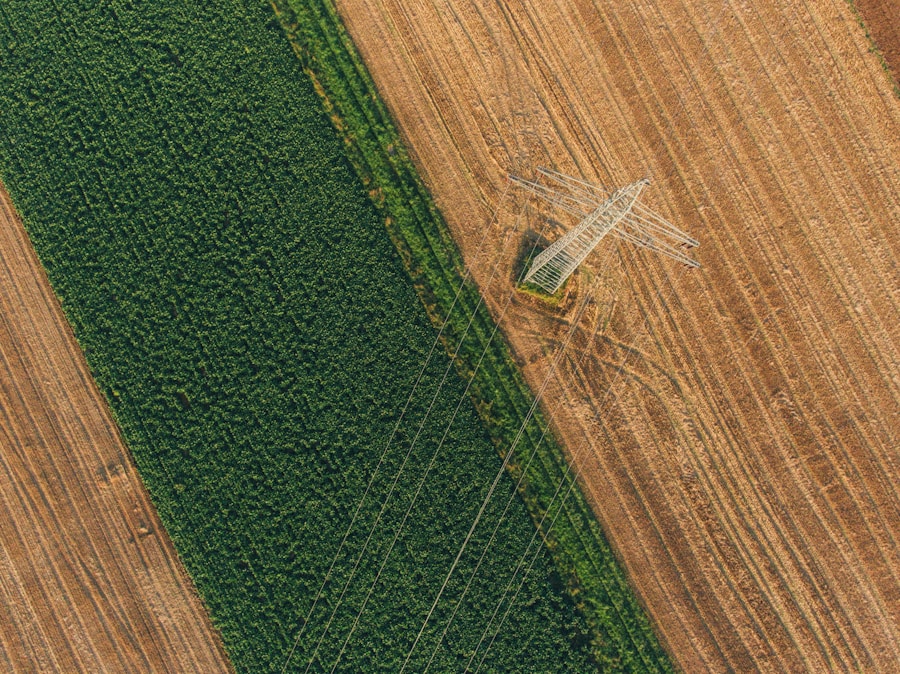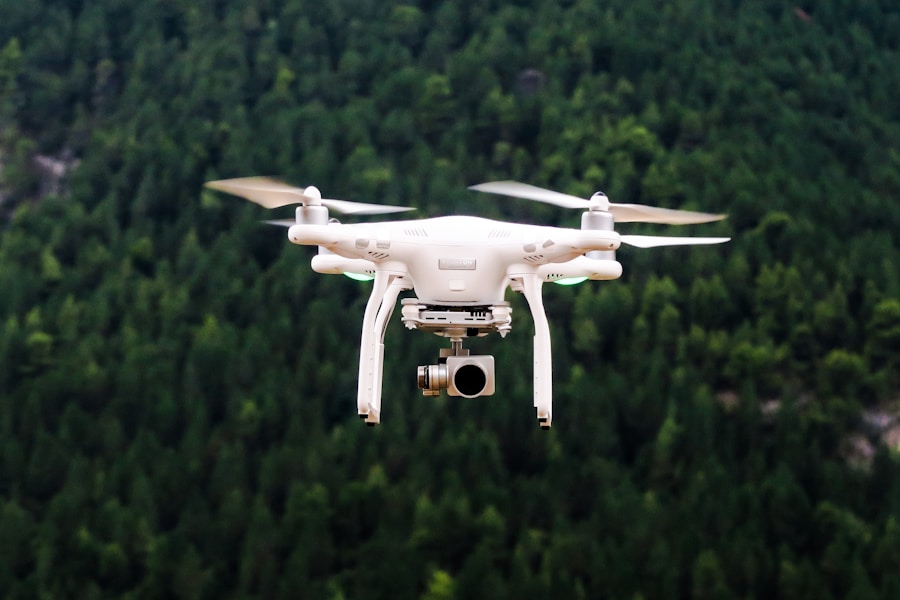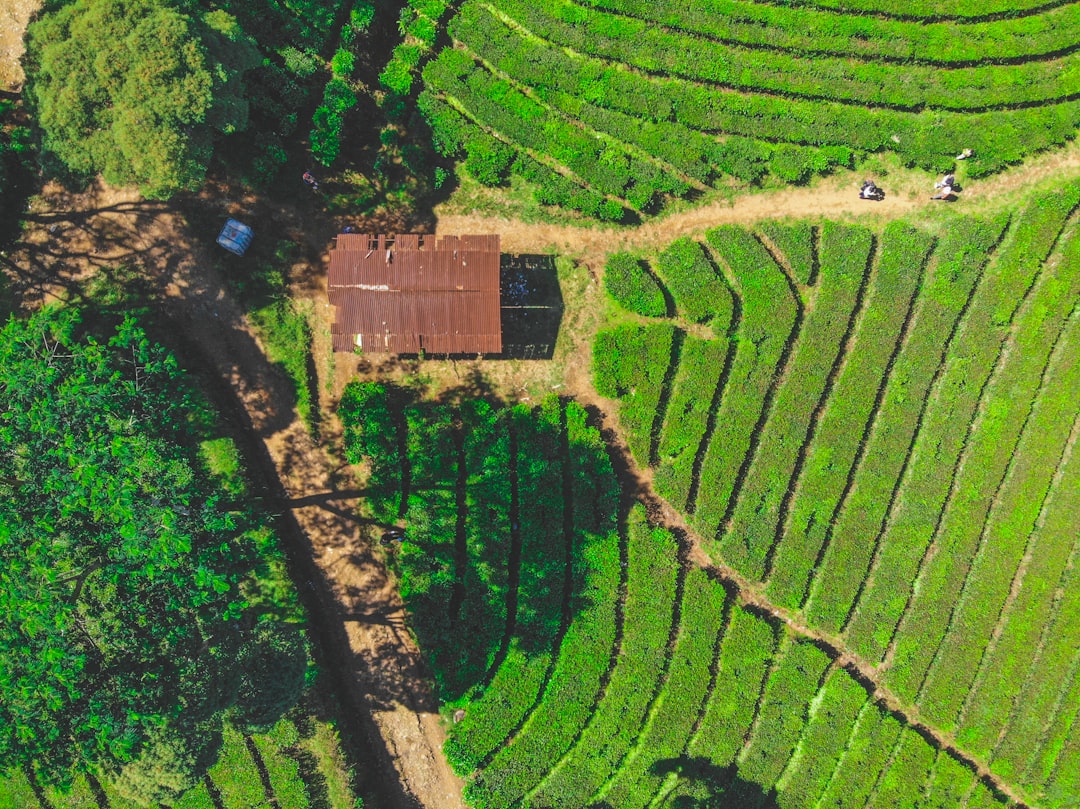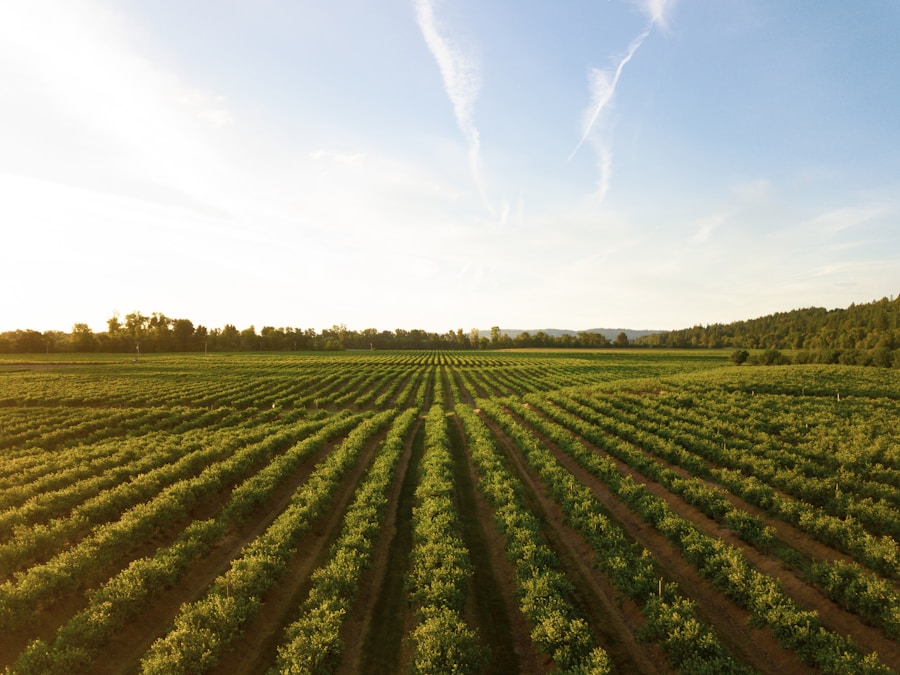Ang mundo ng agrikultura ay sumasailalim sa isang pagbabago ng pagbabago, driven by the growing importance of precision farming and the need for advanced technologies to meet the challenges of modern food production. At the forefront of this revolution is the rise of agricultural drones, which have emerged as a game-changer in the farming industry. Habang ang pandaigdigang populasyon ay patuloy na lumalaki, the demand for efficient and sustainable food production has never been more pressing. Ang mga magsasaka ay bumabalik na sa teknolohiya ng drone upang mapahusay ang kanilang mga operasyon, I -unlock ang mga bagong antas ng pagiging produktibo, at tiyakin ang pangmatagalang posibilidad ng kanilang mga bukid.
Ang lumalagong diin sa katumpakan na agrikultura ay naka -highlight ang pangangailangan para sa mga tool na maaaring magbigay ng detalyado, Ang data ng real-time sa kalusugan ng ani, mga kondisyon ng lupa, at paggamit ng mapagkukunan. Ang mga tradisyunal na pamamaraan ng manu -manong scouting at pagmamasid ay lalong naging hindi sapat sa harap ng pagiging kumplikado at sukat ng modernong pagsasaka. Drone, Sa kanilang kakayahang makunan, lumakad upang punan ang puwang na ito, nag -aalok ng mga magsasaka na hindi pa naganap na pananaw sa kanilang mga bukid at pagpapagana sa kanila na gumawa ng mas matalinong mga pagpapasya.
Ang pagsasama ng teknolohiya ng drone sa sektor ng agrikultura ay naging isang tagapagpalit ng laro, Pagbabago sa paraan ng paglapit ng mga magsasaka sa kanilang operasyon. Mula sa pinahusay na pagsubaybay sa ani at pagkolekta ng data hanggang sa pinahusay na katumpakan sa pamamahala ng mapagkukunan at naka-streamline na mga proseso ng paggawa ng desisyon, drones have become an indispensable tool in the modern farmer’s arsenal. As the technology continues to evolve and become more accessible, the potential for drones to transform the future of farming is truly exciting.
Key takeaways
- Agricultural drones offer numerous benefits for farming, including increased efficiency and precision.
- When choosing an agricultural drone, it’s important to consider factors such as payload capacity, Mga Kakayahang Sensor, flight time, and range.
- Durability and weather resistance are crucial features to look for in an agricultural drone, as they need to withstand the elements.
- User-friendly features and automation should be prioritized when selecting a drone to ensure ease of use.
- It’s essential to navigate drone laws and regulations to ensure regulatory compliance when investing in an agricultural drone.
Understanding the Benefits of Drone Technology in Farming
Ang pag -ampon ng teknolohiya ng drone sa sektor ng agrikultura ay nagdulot ng isang kayamanan ng mga benepisyo na nagbabago sa paraan ng paglapit ng mga magsasaka sa kanilang operasyon. Ang isa sa mga pangunahing bentahe ng paggamit ng mga drone ay ang pinahusay na pagsubaybay sa ani at mga kakayahan sa pagkolekta ng data na inaalok nila. Sa pamamagitan ng pagbibigay ng mga drone na may mga high-resolution camera at dalubhasang sensor, Ang mga magsasaka ay maaari na ngayong makakuha ng detalyado, real-time na impormasyon tungkol sa kalusugan at kundisyon ng kanilang mga pananim, pati na rin ang pangkalahatang estado ng kanilang mga patlang. Ang data na ito ay maaaring magamit upang makilala ang mga potensyal na isyu, tulad ng mga infestations ng peste o kakulangan sa nutrisyon, at paganahin ang mga naka -target na interbensyon bago sila tumaas sa mas malaking problema.
Bukod dito, Ang mga drone ay makabuluhang pinahusay ang katumpakan kung saan maaaring pamahalaan ng mga magsasaka ang kanilang mga mapagkukunan, tulad ng tubig, Mga Fertilizer, at mga pestisidyo. Sa pamamagitan ng pag -agaw ng data na nakolekta ng mga drone, Maaari na ngayong ilapat ng mga magsasaka ang mga input na ito na may kawastuhan ng kirurhiko, tinitiyak na ginagamit lamang sila kung saan at kailan sila kinakailangan. Hindi lamang ito humahantong sa pagtitipid sa gastos ngunit binabawasan din ang epekto ng kapaligiran ng mga kasanayan sa pagsasaka, Ang pagtataguyod ng mas napapanatiling at eco-friendly na agrikultura.
Binago din ng mga drone ang paraan ng pagsasagawa ng mga magsasaka sa larangan ng scouting at mga pagtatasa sa kalusugan ng ani. Sa halip na umasa sa manu -manong inspeksyon, na maaaring maging oras at masinsinang paggawa, Ang mga magsasaka ay maaari na ngayong mag -deploy ng mga drone upang mabilis at mahusay na suriin ang kanilang mga bukid, pagkilala sa mga lugar ng problema at pagsubaybay sa pangkalahatang kondisyon ng kanilang mga pananim. This streamlined approach to field scouting has enabled farmers to make more informed decisions, optimizing their operations and maximizing their yields.
The integration of drone technology into farming has also had a significant impact on the decision-making processes of farmers. By providing them with a wealth of data and real-time insights, drones have empowered farmers to make more informed and strategic choices, whether it’s determining the optimal timing for planting, harvesting, or applying specific inputs. Ang diskarte na hinihimok ng data na ito sa pagsasaka ay may potensyal na madagdagan ang pagiging produktibo, Bawasan ang basura, at mapahusay ang pangkalahatang kakayahang kumita ng mga operasyon sa agrikultura.
Ang mga pangunahing kadahilanan na dapat isaalang -alang kapag pumipili ng isang agrikultura na drone
Habang ang pag -ampon ng teknolohiya ng drone sa sektor ng agrikultura ay patuloy na lumalaki, Ang mga magsasaka ay nahaharap sa hamon ng pagpili ng tamang drone para sa kanilang mga tiyak na pangangailangan. Ang pagkilala sa natatanging mga kinakailangan ng iyong operasyon sa pagsasaka ay ang unang mahalagang hakbang sa proseso ng paggawa ng desisyon na ito. Whether you’re focused on precision crop monitoring, efficient resource management, or comprehensive field scouting, understanding your specific needs will help you narrow down the available options and find the drone that best suits your farming goals.
Once you have a clear understanding of your requirements, it’s essential to explore the various drone models and their capabilities. From entry-level drones with basic features to advanced, high-performance models, the market offers a wide range of options. It’s important to carefully evaluate the specifications of each drone, including its payload capacity, Mga Kakayahang Sensor, flight time, and range, to ensure that it aligns with your farming needs.
Balancing cost, performance, and durability is another key factor to consider when selecting an agricultural drone. While it may be tempting to opt for the most affordable option, it’s crucial to weigh the long-term benefits and potential cost savings that a more capable and durable drone can provide. Investing in a high-quality drone that can withstand the rigors of farming operations and deliver consistent, reliable performance can ultimately lead to greater efficiency and cost-effectiveness in the long run.
Sa wakas, it’s important to consider the long-term maintenance and support requirements of the drone you choose. Farming environments can be harsh, with exposure to various weather conditions, dust, at iba pang mga kadahilanan sa kapaligiran. Ang pagtiyak na ang drone na iyong pinili ay sinusuportahan ng isang matatag na network ng suporta at madaling magagamit na mga bahagi ng kapalit ay makakatulong na mabawasan ang downtime at matiyak ang kahabaan ng iyong pamumuhunan.
Kakayahang payload at kakayahan ng sensor: Pagtutugma ng mga tampok ng drone sa iyong mga pangangailangan sa pagsasaka
Pagdating sa pagpili ng tamang drone ng agrikultura, Ang kapasidad ng payload at mga kakayahan ng sensor ay mahalagang pagsasaalang -alang. Ang kapasidad ng payload ng isang drone ay tumutukoy sa maximum na timbang na maaari nitong dalhin, na kasama ang drone mismo, ang kargamento ng camera o sensor, at anumang karagdagang kagamitan o accessories. Ang pagsusuri ng kapasidad ng kargamento ay mahalaga, dahil matukoy nito ang mga uri ng sensor at iba pang kagamitan na maaari mong isama sa iyong drone, Alin naman ang makakaapekto sa mga kakayahan sa pagkolekta ng data at pagsusuri ng iyong mga operasyon sa pagsasaka.
Ang saklaw ng mga sensor na magagamit para sa mga drone ng agrikultura ay patuloy na lumalawak, nag -aalok ng mga magsasaka ng isang kayamanan ng mga pagpipilian upang mapili. From multispectral cameras that can detect subtle changes in plant health to thermal sensors that can identify areas of stress or disease, the sensor capabilities of modern drones are truly impressive. Assessing the specific data collection and analysis needs of your farm is crucial in determining the types of sensors that will be most beneficial for your operations.
Ensuring that the drone’s capabilities align with your precision agriculture goals is paramount. Halimbawa, if you require detailed, Ang imahe na may mataas na resolusyon upang masubaybayan ang paglaki ng ani at makilala ang mga lugar ng problema, Maaaring mangailangan ka ng isang drone na nilagyan ng isang high-megapixel camera o isang dalubhasang multispectral sensor. Kabaligtaran, Kung ang iyong pokus ay nasa mahusay na pamamahala ng mapagkukunan, Ang isang drone na may mga thermal imaging kakayahan ay maaaring maging mas angkop, dahil makakatulong ito sa iyo na makilala ang mga lugar ng stress sa tubig o hindi pantay na aplikasyon ng pataba.
Sa pamamagitan ng maingat na pagsusuri ng kapasidad ng kargamento at mga kakayahan ng sensor ng iba't ibang mga modelo ng drone, Maaari mong matiyak na ang drone na iyong pinili ay naaayon sa mga tiyak na pangangailangan ng iyong operasyon sa pagsasaka. Ang pagkakahanay sa pagitan ng mga tampok ng drone at ang iyong mga layunin sa agrikultura ay magbibigay -daan sa iyo upang ma -maximize ang mga pakinabang ng teknolohiya ng drone at gumawa ng mas kaalaman, Ang mga desisyon na hinihimok ng data na maaaring humantong sa pagtaas ng pagiging produktibo, pagtitipid sa gastos, at napapanatiling kasanayan sa pagsasaka.
Oras at saklaw ng paglipad: Tinitiyak ang pinakamainam na saklaw para sa iyong bukid
| Modelong Drone | Oras ng paglipad | Kapasidad ng Max Payload | Resolusyon ng camera | Saklaw |
|---|---|---|---|---|
| Model a | 60 minuto | 5 kg | 20 MP | 5 KM |
| Model b | 45 minuto | 3 kg | 24 MP | 3 KM |
| Model c | 75 minuto | 7 kg | 16 MP | 7 KM |
One of the critical factors to consider when selecting an agricultural drone is the flight time and range capabilities. These attributes directly impact the drone’s ability to efficiently cover the entirety of your farm, ensuring that you can collect comprehensive data and effectively monitor your fields.
The importance of flight time and range cannot be overstated, as they directly influence the drone’s operational efficiency and the overall coverage of your farming operations. Longer flight times and greater ranges allow you to survey larger areas without the need for frequent battery changes or landing and takeoff cycles, ultimately saving time and increasing the productivity of your drone-based activities.
When evaluating different drone models, it’s essential to consider the specific size and layout of your farm. Larger farms or those with complex terrain may require drones with extended flight times and longer ranges to ensure complete coverage and data collection. Kabaligtaran, smaller farms or those with more manageable layouts may be better suited to drones with shorter flight times but more frequent battery swaps or recharging capabilities.
Exploring options for extended flight time, such as swappable batteries or hybrid power systems, can be a game-changer for farmers who need to maximize their drone’s operational capabilities. These advanced features can significantly increase the drone’s endurance, pinapayagan kang masakop ang mas maraming lupa at mangalap ng mas malawak na data nang walang mga pagkagambala.
Sa pamamagitan ng maingat na pagsasaalang -alang sa oras ng paglipad at saklaw ng iyong bukid, Maaari kang pumili ng isang drone na na -optimize para sa iyong mga tiyak na pangangailangan, Tinitiyak na maaari mong epektibong magamit ang kapangyarihan ng teknolohiya ng drone upang mapahusay ang iyong katumpakan na mga pagsisikap sa agrikultura at itaboy ang iyong mga operasyon sa pagsasaka sa mga bagong antas ng kahusayan at pagiging produktibo.
Tibay at paglaban sa panahon: Pagpili ng isang drone na itinayo para sa mga elemento
When selecting an agricultural drone, it’s crucial to consider the durability and weather resistance of the device, as farming environments can be harsh and unforgiving. Drones operating in these conditions must be able to withstand a variety of environmental factors, from strong winds and heavy rain to dust and debris, to ensure reliable and consistent performance.
Evaluating the drone’s construction and materials is a key aspect of assessing its durability. Drones built with high-quality, rugged components are more likely to withstand the rigors of farming operations and maintain their integrity over time. This includes factors such as the drone’s frame, propellers, and other critical components that must be able to withstand the stresses of frequent use and exposure to the elements.
In addition to the drone’s physical construction, it’s essential to consider its ability to operate reliably in the specific climate and weather patterns of your farm. Drones that are designed to withstand the unique environmental conditions of your region, whether it’s extreme temperatures, high humidity, or frequent storms, will be better equipped to perform consistently and minimize the risk of downtime or equipment failure.
The availability of replacement parts and maintenance support is another important consideration when it comes to the durability and weather resistance of your agricultural drone. Ang pagtiyak na mayroon kang pag-access sa mga kinakailangang ekstrang bahagi at na ang tagagawa ng drone o tagapagbigay ng serbisyo ay nag-aalok ng maaasahang mga serbisyo sa pagpapanatili at pag-aayos ay makakatulong sa iyo na mapanatili ang pangmatagalang posibilidad ng iyong pamumuhunan at mabawasan ang epekto ng anumang hindi inaasahang mga isyu o pagkasira.
Sa pamamagitan ng maingat na pagsusuri ng tibay at paglaban sa panahon ng iba't ibang mga modelo ng drone, Maaari kang pumili ng isang aparato na angkop sa mga hinihingi ng iyong operasyon sa pagsasaka, ensuring that your investment in drone technology delivers consistent, reliable performance and maximizes the benefits of precision agriculture.
Ease of Use and Automation: Prioritizing User-Friendly Features
Habang ang pag -ampon ng teknolohiya ng drone sa sektor ng agrikultura ay patuloy na lumalaki, the ease of use and automation features of these devices have become increasingly important considerations for farmers. After all, the success of integrating drones into farming operations relies heavily on the ability of the operators to effectively and efficiently utilize the technology.
Evaluating the drone’s control system and user interface is a crucial step in the selection process. Drones with intuitive, user-friendly controls and clear, informative displays can significantly reduce the learning curve for operators, enabling them to quickly master the device’s capabilities and seamlessly incorporate it into their daily farming routines.
In addition to the control system, the availability of autonomous or semi-autonomous flight modes can be a game-changer for farmers. These advanced features, such as pre-programmed flight paths, automated waypoint navigation, and intelligent obstacle avoidance, can greatly simplify the drone’s operation and reduce the workload on the pilot, allowing them to focus on other critical tasks.
The learning curve and training requirements for your farm’s operators are also essential factors to consider. Drones with more complex features or advanced functionalities may require more extensive training and familiarization, which can impact the overall adoption and integration of the technology within your farming operation. Selecting a drone that strikes the right balance between advanced capabilities and user-friendliness can help ensure a smooth transition and maximize the benefits of drone technology for your farm.
Sa wakas, the integration of drone technology with farm management software and data analysis tools can further enhance the ease of use and automation capabilities. By seamlessly integrating the drone’s data with your existing farm management systems, you can streamline the data collection and analysis processes, enabling you to make more informed, data-driven decisions that drive the success of your precision agriculture efforts.
Regulatory Compliance: Navigating Drone Laws and Regulations
As the use of drones in the agricultural sector continues to grow, it is essential for farmers to navigate the complex landscape of drone laws and regulations. Ensuring compliance with local, regional, and national guidelines is not only a legal requirement but also a critical factor in the safe and responsible integration of drone technology into farming operations.
Understanding the specific regulations governing drone use in agriculture is the first step in this process. Factors such as airspace restrictions, pilot licensing requirements, and operational guidelines can vary significantly depending on the location and jurisdiction of your farm. Staying informed about any updates or changes in these regulations is crucial, as the legal landscape surrounding drone technology is constantly evolving.
Selecting a drone model that complies with the relevant safety and operational guidelines is paramount. This includes features such as built-in geofencing, automated return-to-home functions, and compliance with weight and size restrictions. By choosing a drone that is designed to operate within the established regulatory framework, you can minimize the risk of legal issues or safety concerns and ensure the seamless integration of the technology into your farming practices.
In addition to the drone itself, the licensing and certification requirements for drone pilots must also be taken into consideration. Depending on the specific regulations in your area, your farm’s operators may need to obtain specialized training and certifications to legally operate the drone. Investing in this training and ensuring that your pilots are properly licensed can help you avoid potential legal complications and maintain the highest standards of safety and professionalism.
By staying informed about the regulatory landscape and selecting a drone that is compliant with the relevant laws and guidelines, farmers can navigate the complexities of drone technology with confidence and ensure the long-term success of their precision agriculture efforts. Embracing a proactive and responsible approach to drone integration can not only protect your farm but also contribute to the responsible development of this transformative technology within the agricultural sector.
Investing in the Right Agricultural Drone for Your Farm’s Success
As the agricultural industry continues to evolve, the integration of drone technology has become a critical component of modern farming operations. The rise of agricultural drones has ushered in a new era of precision agriculture, empowering farmers with unprecedented levels of data, kahusayan, and decision-making capabilities.
Throughout this article, we have explored the key considerations and decision-making process involved in selecting the right agricultural drone for your farm. From understanding the benefits of drone technology and evaluating the specific needs of your farming operation to assessing factors such as payload capacity, Mga Kakayahang Sensor, flight time, and regulatory compliance, the selection of the appropriate drone is a multifaceted and strategic endeavor.
By thoroughly researching and evaluating the available options, farmers can find the agricultural drone that best aligns with their precision agriculture goals and the unique characteristics of their farm. Investing in the right drone can unlock a wealth of benefits, including improved crop monitoring, enhanced resource management, streamlined decision-making, and increased overall productivity and profitability.
As the technology continues to evolve and become more accessible, the potential for drones to transform the future of farming is truly exciting. By embracing this transformative tool and incorporating it into their operations, farmers can position themselves at the forefront of the precision agriculture revolution, driving their farms to new levels of success and sustainability.
The decision to invest in an agricultural drone is not one to be taken lightly, but the long-term advantages it can bring to your farming operations are undeniable. By carefully considering the factors outlined in this article and making an informed choice, you can unlock the full potential of drone technology and secure the future prosperity of your farm.
FAQS
What is an agricultural drone?
An agricultural drone, also known as a farming drone or ag drone, is an unmanned aerial vehicle (UAV) specifically designed for use in agriculture. These drones are equipped with various sensors and cameras to collect data and imagery for monitoring crops, Livestock, and land.
Ano ang mga pakinabang ng paggamit ng mga drone ng agrikultura?
Agricultural drones offer several benefits to farmers, including the ability to monitor crop health, assess field conditions, optimize irrigation and fertilization, and detect pest infestations. Drones can also help farmers save time and resources by providing efficient and accurate data for decision-making.
What factors should be considered when choosing an agricultural drone?
When choosing an agricultural drone, farmers should consider factors such as flight time, Kapasidad ng kargamento, camera quality, Mga Kakayahang Sensor, software compatibility, at kadalian ng paggamit. Bilang karagdagan, the size of the farm, specific agricultural needs, and budget should also be taken into account.
What are the different types of sensors used in agricultural drones?
Agricultural drones can be equipped with various sensors, including multispectral, hyperspectral, thermal, and LiDAR sensors. These sensors enable the drones to capture different types of data related to crop health, soil moisture, temperature variations, and terrain mapping.
Are there any regulations or restrictions for using agricultural drones?
Sa maraming mga bansa, there are regulations and restrictions for using agricultural drones, including obtaining proper certifications, adhering to flight altitude limits, and respecting privacy laws. It is important for farmers to be aware of and comply with these regulations when using drones for agricultural purposes.








